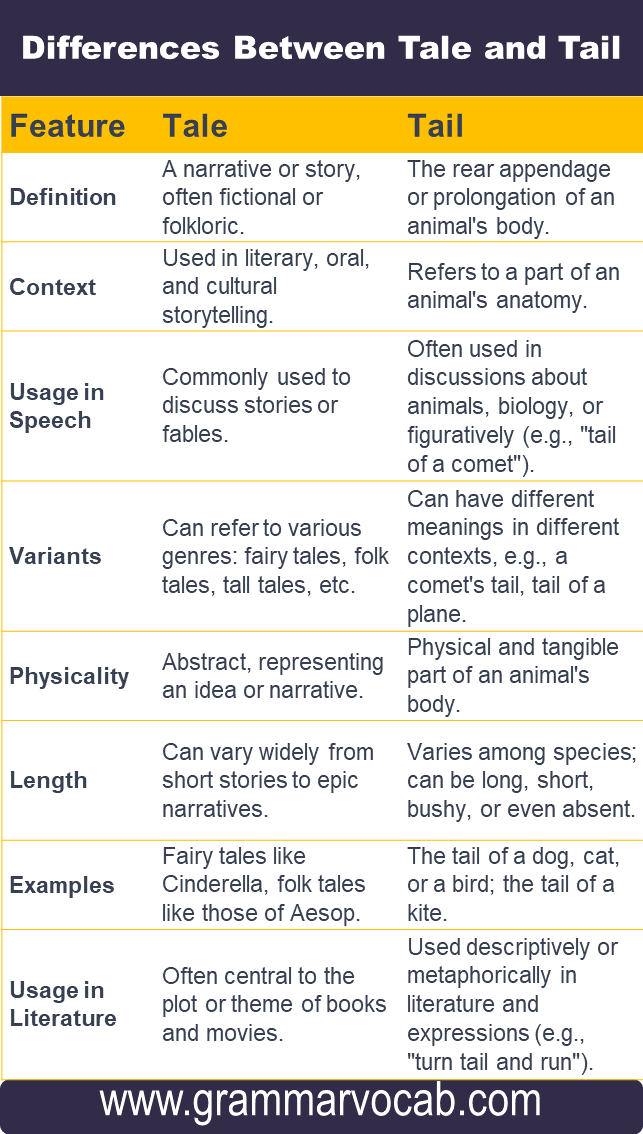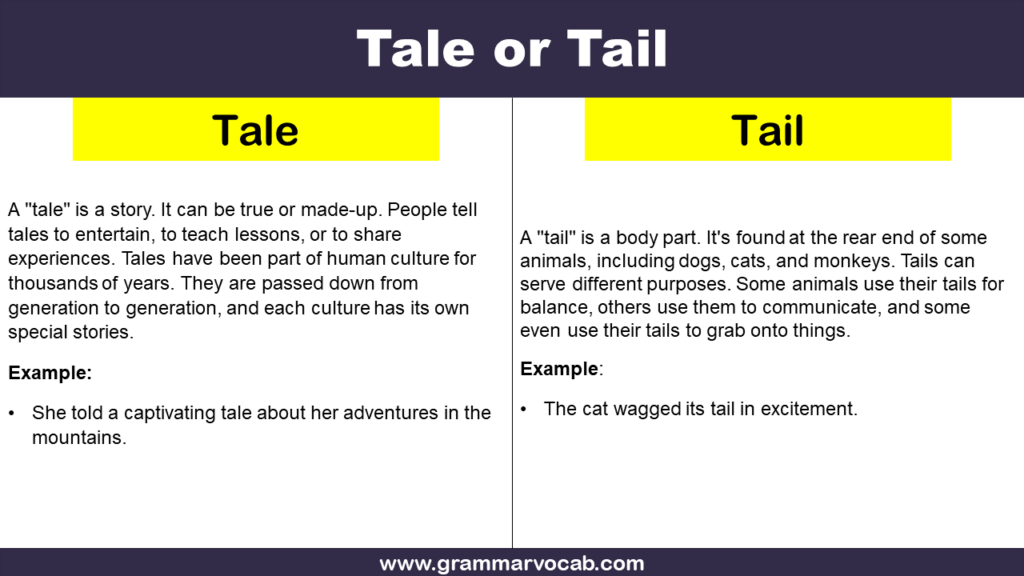Language is a fascinating thing. It’s full of words that sound the same but mean different things. This can be confusing, especially for people learning English. Two such words are “tale” and “tail.” They sound identical but have completely different meanings. Let’s explore these words in a fun and simple way.
What is a Tale?
A “tale” is a story. It can be true or made-up. People tell tales to entertain, to teach lessons, or to share experiences. Tales have been part of human culture for thousands of years. They are passed down from generation to generation, and each culture has its own special stories.
What is a Tail?
A “tail” is a body part. It’s found at the rear end of some animals, including dogs, cats, and monkeys. Tails can serve different purposes. Some animals use their tails for balance, others use them to communicate, and some even use their tails to grab onto things.
Differences Between Tale and Tail
“Tale” and “tail” are two words that are often confused due to their similar pronunciation but have different meanings and uses.
| Feature | Tale | Tail |
| Definition | A narrative or story, often fictional or folkloric. | The rear appendage or prolongation of an animal’s body. |
| Context | Used in literary, oral, and cultural storytelling. | Refers to a part of an animal’s anatomy. |
| Usage in Speech | Commonly used to discuss stories or fables. | Often used in discussions about animals, biology, or figuratively (e.g., “tail of a comet”). |
| Etymology | Derives from Old English “talu,” meaning a story or account. | Comes from the Old English “taegl,” which means the hindmost part of an animal. |
| Variants | Can refer to various genres: fairy tales, folk tales, tall tales, etc. | Can have different meanings in different contexts, e.g., a comet’s tail, tail of a plane. |
| Symbolism | Tales often symbolize moral lessons or cultural values. | Tails can symbolize balance in animals, and in idioms, can represent following or being at the end of something. |
| Physicality | Abstract, representing an idea or narrative. | Physical and tangible part of an animal’s body. |
| Length | Can vary widely from short stories to epic narratives. | Varies among species; can be long, short, bushy, or even absent. |
| Examples | Fairy tales like Cinderella, folk tales like those of Aesop. | The tail of a dog, cat, or a bird; the tail of a kite. |
| Usage in Literature | Often central to the plot or theme of books and movies. | Used descriptively or metaphorically in literature and expressions (e.g., “turn tail and run”). |
Understanding the difference between “tale” and “tail” helps you communicate clearly. If you mix them up, it can lead to funny or confusing situations. Imagine saying, “I love reading tails before bed.” It sounds like you enjoy reading about animal’s tails.
Tips to Remember
- Tale for Story: Think of the “e” in “tale” as the beginning of “entertainment” or “enjoyable story.”
- Tail for Animals: Remember, “tail” has an “i”, just like “animal.”
Must Try:
Necessary or Necessarily
Club vs Bar
Direct and Directly




